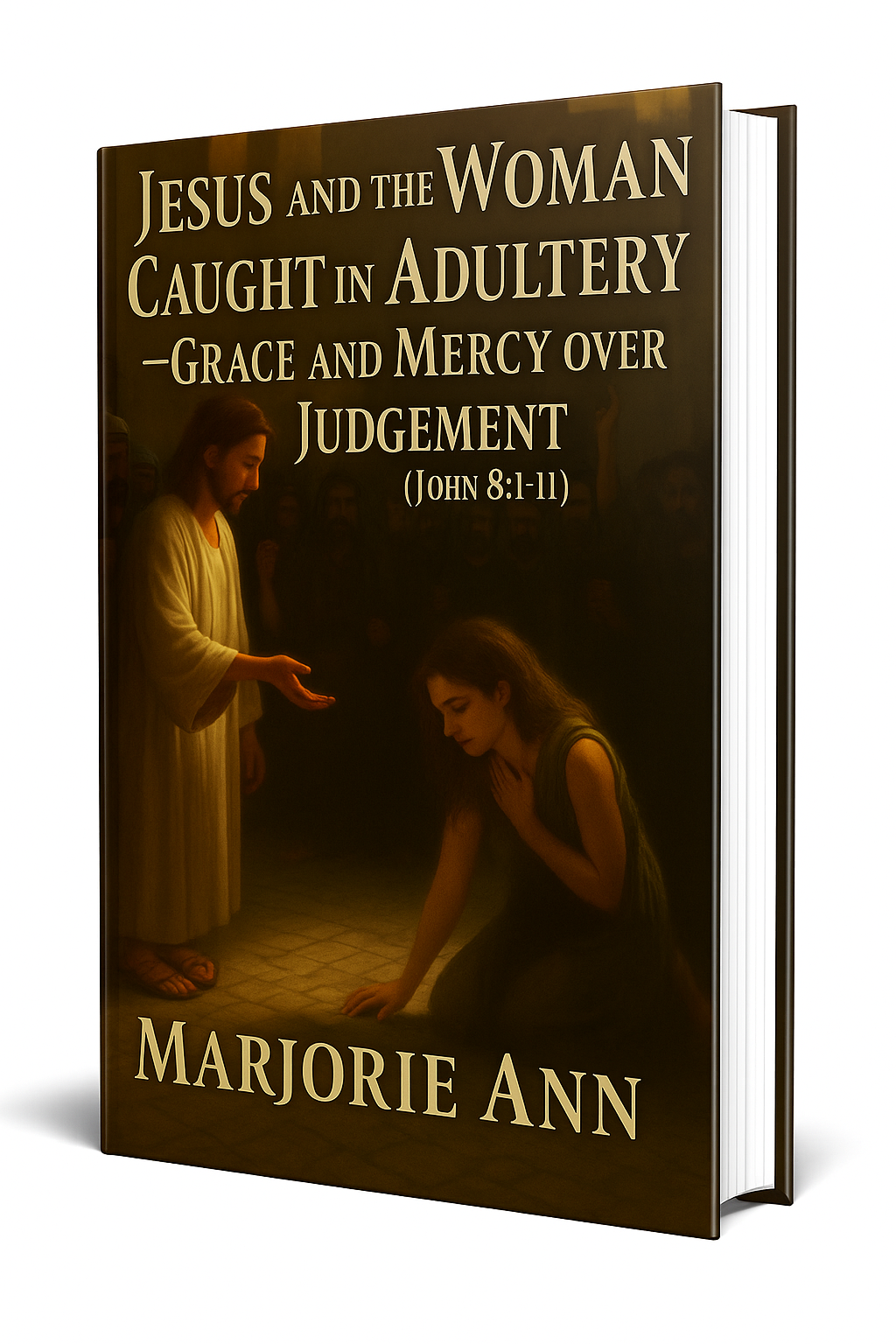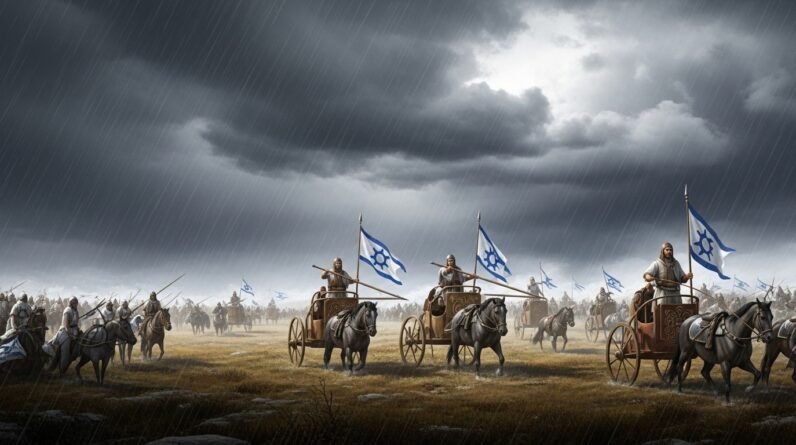Abel’s Faith And The Gospel Connection
You’re about to take a close, pastoral look at a short but powerful story in Scripture — Abel’s life, his faith, his death, and how all of that connects to the gospel of Jesus Christ. When you think of Abel, you might remember a boy killed by his brother, or perhaps just a name in Genesis. But when you read the Bible with care, you’ll discover that Abel’s life illustrates foundational gospel truths: sacrifice, faith, the seriousness of sin, and the hope of God’s justice. That’s why exploring Abel’s story helps you understand how God works in the world, and how your faith connects to God’s redemptive plan. In this article, you’ll see how Abel’s faith and gospel realities intersect, and you’ll find practical, pastoral applications for your life right now.
The Narrative Frame: Genesis and the First Brothers
You’ll find Abel’s story in the very early chapters of human history. Read the account and you’ll see a family, a beginning of worship, and an early act of violence that echoes throughout Scripture. Genesis 4 records the first instance of sibling rivalry that escalates into murder, and it teaches you about the consequences of sin in the human heart. See the passage here: Genesis 4:1-8. When you read these verses, notice how short the narrative is and how much meaning is packed into just a few lines.
Genesis gives you the essential facts: Cain and Abel, two brothers; two offerings; God’s different response. Abel is described as a keeper of sheep, and Cain as a tiller of the ground. The Bible’s brevity here is purposeful — it invites you to fill in the spiritual implications. You’ll see that the different hearts of the brothers produce different kinds of worship. Abel gives a blood offering; Cain gives fruit from the ground. The passage points you toward the deeper truth that God looks at the heart, not just outward actions.
Abel’s Offering: More Than the Gift
When you study Genesis 4 closely, you’ll notice that the text emphasizes Abel’s offering in relation to his heart. Read the verses about the offerings here: Genesis 4:3-5. The record tells you that Abel brought fat portions from the firstborn of his flock, and that the Lord looked with favor on Abel and his offering. Why does God accept one and not the other? The Bible doesn’t leave you guessing about the issue — Hebrews helps fill in the gap.
Hebrews 11:4 tells you plainly that “by faith Abel brought a better offering.” Read it for yourself: Hebrews 11:4. The writer of Hebrews is not merely giving you a historical footnote; he’s drawing a theological line between Abel’s faith and the way God responds. Abel’s sacrifice matters not simply because of what it was made of, but because of the posture of his heart. The gospel-centered truth here is that God accepts sacrificial offerings when they are given in faith — a truth that points you forward to Christ’s perfect sacrifice.
Faith Defined: How Abel Models True Trust
You want to understand faith in action? Look at Abel. The New Testament highlights him as an example: his faith made his offering acceptable. In the early church, writers used Abel’s example to show how faith is the key ingredient in worship. Faith is not a vague feeling; it is a trusting response to God that moves your hands to action. When you bring your best to God, faith informs what you bring and why you bring it.
Think about the implications for your life. When you give — whether it’s money, time, or talents — are you giving because you’re trying to impress people, or because you trust God for his promises and honor him with your obedience? Abel’s offering was costly and sincere. Hebrews tells you that it was “more acceptable” because it was offered by faith. That’s the gospel linkage: faith counts more than ritual. The real sacrifice God honors is not the material gift alone, but the faith behind it. The connection between Abel’s faith and gospel truth teaches you that right relationship with God is based on trust in him, not on mere performance.
The Gospel Connection: Blood, Sacrifice, and Atonement
You’ll notice a clear parallel between Abel’s blood and the later gospel narrative. Genesis records that Abel offered a blood sacrifice from the firstborn of his flock. That points forward to the theological center of the gospel: atonement through blood. Read Genesis 4:4 to see the detail about Abel’s offering: Genesis 4:4. Blood in Scripture often represents life, substitution, and the seriousness with which sin must be treated.
Move forward to the New Testament and you’ll see the gospel’s reliance on the blood of Christ. Hebrews 9:22 reminds you, “without the shedding of blood there is no forgiveness.” Read it here: Hebrews 9:22. The connection is not that Abel’s blood itself atoned for anyone, but that his offering and death point forward to the ultimate atoning sacrifice. Abel’s life and death highlight the truth that God takes sin and sacrifice seriously — and that justice is real. Abel’s offering anticipates Christ’s once-for-all sacrifice, which provides the full atonement God demands.
When you think about “Abel’s faith and gospel,” you’re recognizing that Abel’s act of faith and the blood sacrifices of Israel find their fulfillment in Christ. Abel models a faith posture that trusts God’s way of dealing with sin. The gospel completes what these early sacrifices could only point toward: a perfect Savior who satisfies God’s justice and extends mercy to sinners who place their faith in him.
Abel’s Murder: The Tragic Result of Sin
You don’t gloss over the violence in the story — Cain kills Abel. Genesis 4:8 gives the stark account: Genesis 4:8. Something in Cain’s heart spilled over into murder. The text doesn’t leave you with a simple moral lesson: the tragedy is spiritual. Jealousy, resentment, and a refusal to repent led to the first homicide. That shows you how sin, unchecked, will do damage — both to individuals and to the community.
When you read this, you also see the cost of spiritual blindness. Cain couldn’t see his own need or his brother’s righteousness. He saw the external circumstances — that God favored Abel’s offering — but he didn’t recognize that God was addressing the heart. That failure of vision led him to lash out. For you, this is a warning: if you fail to examine your own heart, envy and bitterness can take root. Abel’s death underscores the gospel message that sin destroys unless God’s grace intervenes through the cross.
Abel’s Blood and the Language of Justice
You’ll find that Scripture speaks about Abel’s blood in a way that anticipates justice. In Genesis 4:10, the Lord says, “the voice of your brother’s blood cries out to me.” See the verse here: Genesis 4:10. The imagery of blood crying out is dramatic. It’s not that blood literally makes noise; it’s symbolic of the way violence cries out for justice. God hears the cry of the oppressed and wounded, and he takes it seriously.
Jesus later referenced the same idea when he spoke of blood being shed. In Matthew 23:35, he mentions Abel’s blood among those whose lives were lost because of the evil of others: Matthew 23:35. Jesus used that idea to convict the religious leaders of their hypocrisy and violence. The gospel assures you that God is not indifferent to wrong. He hears the cry of Abel’s blood and the cry of every victim. Jesus’ coming brings not only forgiveness, but the justice that God promises to execute in his time.
Hebrews and the Better Word: Jesus vs. Abel
You’ll find the New Testament interpretation of Abel’s blood pointed and theologically rich. Hebrews 12:24 contrasts the blood of Jesus with the blood of Abel. The passage says God has spoken through Jesus, “to Jesus the mediator of a new covenant, and to the sprinkled blood that speaks a better word than the blood of Abel.” Read it here: Hebrews 12:24. What does it mean that Jesus’ blood “speaks a better word”? It means that the gospel’s announcement is more complete than the cry for vengeance.
Abel’s blood cried out for justice; Christ’s blood cries out for mercy and reconciliation. Jesus’ sacrifice does what early sacrifices could not: it removes the guilt of sin, heals the broken relationship with God, and secures eternal restoration. When you consider “Abel’s faith and gospel” together, you see that Abel’s faith pointed forward to the hope that would be fully revealed in Christ. Abel’s example is instructive, but the gospel invites you into something greater: not merely a call for justice, but an offer of grace for repentant sinners.

Abel and the Righteous Sufferer Motif
You’ll notice a pattern in Scripture of righteous ones suffering at the hands of the wicked. 1 John 3:12 calls Cain’s actions “of the evil one,” contrasting the wicked with the righteous. Read it here: 1 John 3:12. Abel stands in that line of righteous sufferers, individuals whose faithfulness to God brings opposition and sometimes persecution. The gospel teaches you that suffering for righteousness is part of the Christian story, but it’s not without meaning: God sees, God remembers, and God will vindicate.
This motif comforts you when you face unfair treatment. Abel’s story is short, but it’s meaningful: he did not live to see vindication on earth, but Scripture honors him. Hebrews 11 remembers his faith. That historical remembrance encourages you that God values your faithfulness even when the world rejects you. The gospel assures you that ultimate vindication is in Christ, and your present sufferings are never wasted.
Comparing Abel and Christ: Atypical and Typical Patterns
If you want to connect Abel directly to the gospel, look for both the parallels and the contrasts. Abel’s life is a typology — a foreshadowing — that points toward Christ’s work. Like Abel, Jesus was righteous and was unjustly killed. Matthew 23:35 pairs Abel with other martyrs, placing him in a line of the righteous who have suffered: Matthew 23:35. Yet, unlike Abel, Jesus’ death is not a cry for vengeance; Jesus’ blood speaks a better word — for forgiveness and covenant.
You should see that Abel’s faith highlights trust and obedience, which are qualities in Christ in their fullness. Abel’s sacrifice, offered in faith, symbolizes a heart that trusts God’s requirements. Jesus fulfills what those early sacrifices pointed toward. The difference is that Jesus is the perfect, once-for-all sacrifice. Abel’s offering anticipated God’s plan; Christ’s offering accomplished it. When you reflect on “Abel’s faith and gospel,” you’re acknowledging how God used early moments to show you the pattern of redemption that climaxes in Christ.
The Gospel’s Practical Challenge: Examine Your Offering
You’re not just studying doctrine; you’re being challenged to apply it. Abel’s story asks you to examine the quality of your worship. Are you offering things to God that reflect faith, repentance, and trust? Or are you performing rituals while your heart remains disconnected? The New Testament asks the same question of you. It is not enough to go through the motions. Hebrews points you to faith as the difference-maker.
When you think about giving, leading, serving, or praying, ask: Does my action come from faith, or from obligation, pride, or a desire to control outcomes? Abel’s offering was sacrificial and sincere. Your worship should aim for the same authenticity. The gospel transforms how you worship because you now worship in light of grace and gratitude. Your service becomes an expression of love for the Savior who poured out his life for you.
Abel’s Example for Believers: Faith When You Can’t See the End
You’ll learn from Abel that faith often involves trusting God without seeing the final outcome. Hebrews 11 celebrates those who acted by faith with assurance about things not yet fully realized. Abel’s offering is commended not because it solved everything in his day, but because it displayed trust in God’s promises. For you, faith sometimes means you serve and pray in the present, hoping for a future you can’t yet fully envision.
That posture matters in the Christian life. You might not see immediate fruit for your efforts. You might suffer because of your allegiance to Christ. But God honors what faith produces, and he remembers those acts. Abel’s remembrance in Hebrews 11 is proof that God keeps records of faithful deeds. The gospel assures you that your present faithfulness will not be forgotten. It’s a promise that encourages perseverance.
Gospel Hope: Vindication and Reconciliation
When you wrestle with the injustice in the world — the pain, the senseless loss like Abel’s — you need gospel hope. The Bible promises that God is just and that he will ultimately reconcile and restore. Paul’s gospel message includes the hope that, through Christ, God is both just and the justifier of those who have faith in Jesus (see Romans 3:26). Read Romans 3:26 here: Romans 3:26. The gospel doesn’t deny the reality of suffering; it promises a resolution beyond human vengeance.
Jesus’ work provides both the demand of justice and the supply of mercy. Abel’s blood called for justice; Christ’s blood fulfilled the requirements of justice while offering mercy for the repentant. The result is that you can trust God even when life seems unfair. The gospel tells you this world is not the end — God will make things right in his time, and he invites you to be part of that redemptive plan.
Living Faith: Practical Steps You Can Take Today
You’ll want practical steps — not just theology. Here are a few life-changing applications you can begin right now to let Abel’s lessons shape your own faith walk.
- Examine your heart regularly. Ask God to reveal where pride, envy, or resentment may be present.
- Make your offerings sacrificial and faith-filled. Give generously and joyfully, trusting God for provision.
- Do not retaliate when wronged. Seek justice through prayer and godly means, but avoid bitterness and revenge.
- Stand with the oppressed. Abel’s story reminds you to listen to the cries of those hurt by sin and stand for righteousness.
- Persevere in faith even when outcomes aren’t visible.
Each of these steps roots you in gospel reality — that God honors faith and offers grace to help you live it out. When you practice these things, you participate in the legacy Abel left: a faith that pleases God.
Abel’s Faith and Gospel Witness in Community
You don’t live your faith in a vacuum. Abel’s story is also a community story — Cain, Abel, their parents, and then a human community living in the aftermath. The gospel transforms communities by shaping personal hearts. If you want your church or small group to be healthy, encourage members to examine motives, emphasize faith-driven worship, and teach the seriousness of sin and the power of grace.
When you lead or serve in the church, be intentional about teaching both justice and mercy. Abel’s narrative compels the community to care for the vulnerable and to pursue holiness. The gospel equips you to do both: to love people with compassion and to call them to repentance. Your witness, then, becomes a picture of the reconciliatory power of Christ’s sacrifice.

Teaching Children: Simple Ways to Explain Abel and the Gospel
You’ll likely teach this story to kids at some point. The truth is, Abel provides a clear, simple picture for children of what faith and sacrifice look like. Tell them the story from Genesis and then help them see the gospel link: Abel trusted God; Jesus is the ultimate friend we trust.
Use tangible examples: a child can bring their best drawing to God, or help feed an animal as a symbolic way to show what it means to bring their best. Then explain that Jesus gave his life so that people who trust him can be forgiven. Children can understand the core gospel idea: trust God, and God responds with grace. Teaching this way helps you raise the next generation to value faith over formality.
Pastoral Encouragement: Hope When You Face Unjust Loss
As someone walking with people through pain, you know that abuses and unfair losses leave scars. Abel’s story gives pastoral language for grief: it acknowledges injustice, recognizes that God sees and hears, and points toward Christ’s redemptive work. Use this story to comfort those who’ve endured harm. Let them know that God is neither indifferent nor impotent.
You can say to a hurting person: God heard Abel’s cry, and he heard your cry. He does not promise instant correction in every case, but he offers final vindication and present comfort through the Holy Spirit. Encourage them to trust God’s justice and to rest in the gospel that assures them of God’s love and ultimate righting of wrongs.
How Abel’s Story Shapes Evangelism
You’ll notice evangelism benefits from the Abel narrative because it highlights both human need and God’s response. People are receptive when they hear that God sees suffering but also provides a solution. Abel’s faith points people to the necessity of trusting God and the seriousness of sin, while the gospel offers the remedy.
When you share the gospel, present the problem (sin and its consequences), the evidence of brokenness (the cry of Abel’s blood and other injustices), and the solution (Jesus’ sacrificial blood and resurrection). This structure connects with human experience and Scripture’s storyline. Use Abel’s example to demonstrate that faith matters and that God’s remedy is both just and merciful.
Common Questions You’ll Ask About Abel
You might wonder: Did Abel’s blood demand revenge? Did his death accomplish anything? Did Abel’s faith save him? The Bible answers these questions implicitly and explicitly. Abel’s blood did cry out for justice, but God, in Christ, reoriented the call toward mercy and restoration. Abel’s faith is commended in Hebrews, and that commendation shows you that faith is always the criterion for a right relationship with God.
You should hold both realities — justice and mercy — in tension. Justice affirms the seriousness of sin, and mercy reveals God’s plan to rescue sinners. These are not contradictory but complementary: in Christ, justice and mercy meet. Understanding this helps you resolve questions about whether God cares or whether faith is sufficient. The gospel assures you both.
The Ultimate Point: God’s Plan Fulfilled in Christ
If you’re seeking the bottom line, here it is: Abel’s life and death point you to the gospel. His faith, his sacrifice, and his martyrdom are part of the biblical tapestry that leads to Jesus. Hebrews and the Gospels interpret Abel as a figure whose faith is included in the roll call of faithfulness and whose blood symbolizes cries of injustice that find their ultimate answer in Christ. When you grasp how “Abel’s faith and gospel” connect, you see continuity in God’s plan from Genesis through Revelation.
The overarching narrative of Scripture is one of creation, fall, and redemption. Abel’s story is a microcosm of the fall and the longing for redemption. Jesus is the fulfillment. The New Testament makes that clear: where early sacrifices pointed forward, Jesus steps in as the final sacrifice — the one who reconciles sinners to God.
Concluding Application: Live in Light of the Story
You’re called to live as someone who both understands theology and practices it. Let Abel’s example shape your daily spiritual disciplines. Offer your best to God, not for show but from conviction. Trust God with your life, your losses, and your longings. When injustice happens, cling to the gospel that promises God will set things right in his time. Hebrews 11 remembers Abel’s faith; the gospel remembers you. Walk like someone who believes that the story doesn’t end with suffering but with redemption.
As you step out this week, take one small tangible step: give sacrificially, pray for those who’ve been wronged, and confess any envy or resentment you might be harboring. These actions train your heart to trust God more fully. When you live this way, you embody the connection between Abel’s faith and the gospel — you become part of God’s story of redemption.
Explore More
For further reading and encouragement, check out these posts:
👉 7 Bible Verses About Faith in Hard Times
👉 Job’s Faith: What We Can Learn From His Trials
👉 How To Trust God When Everything Falls Apart
👉 Why God Allows Suffering – A Biblical Perspective
👉 Faith Over Fear: How To Stand Strong In Uncertain Seasons
👉 How To Encourage Someone Struggling With Their Faith
👉 5 Prayers for Strength When You’re Feeling Weak

📘 Jesus and the Woman Caught in Adultery – Grace and Mercy Over Judgement
A powerful retelling of John 8:1-11. This book brings to life the depth of forgiveness, mercy, and God’s unwavering love.
👉 Check it now on Amazon
As a ClickBank Affiliate, I earn from qualifying purchases.
Acknowledgment: All Bible verses referenced in this article were accessed via Bible Gateway (or Bible Hub).
“Want to explore more? Check out our latest post on Why Jesus? and discover the life-changing truth of the Gospel!”








